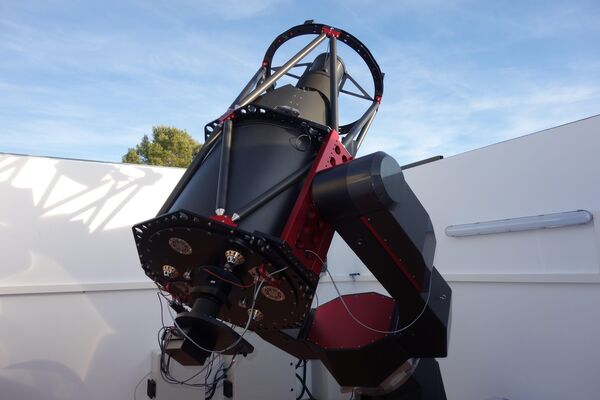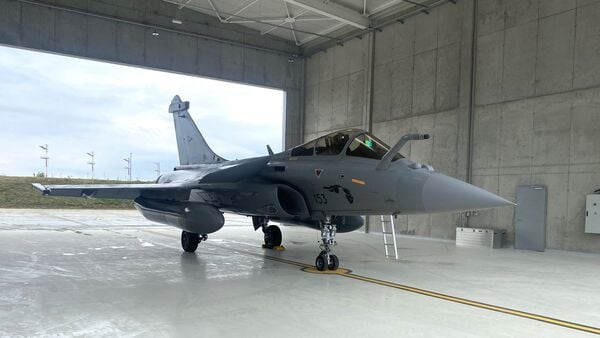- About
- Intara
- Capabilities
- Advisory
- Resources
- News
- Store
AUSA 2021: Companies, US Army leaders converge on Washington with new kit and program updates
10 October 2021
by Ashley Roque
As Industry and US Army officials descend on Washington, DC, for the annual Association of the US Army conference (AUSA), running from 11-13 October, for the opportunity to mingle and show off new and improved defense technologies. Ashley Roque explores...
Since last year’s event was virtual due to the ongoing pandemic, companies are racing to secure time with decision-makers to demo what they have been working on. A new administration has ushered in a sea of changes including the service’s first female civilian head, Secretary of the Army Christine Wormuth.
While Wormuth has only been at the army’s helm for several months, she has defended the six modernization priorities — long-range precision fires (LRPF), next-generation combat vehicles, future vertical lift, the network, air and missile defense, and soldier lethality. While industry may have let out a collective sigh of relief due to her support of these development areas, she has hinted at looming cuts in a bid to trim fat and army belt-tightening measures are not expected to ease up in the coming years.
For example, the army’s proposed fiscal year (FY) 2022 budget (not yet approved by Congress) cut USD3.6 billion over the FY 221 discretionary spending levels. This trend is expected to continue as the Pentagon looks for ways to fund navy modernization and increase its presence in the Indo-Pacific region.
With these moving pieces and question marks, all eyes will be on Wormuth’s guidance during the show and hits from senior Pentagon leaders who will also be attending.
This year’s AUSA event will also be filled with in-depth discussions about the service’s role around the globe and a wide array of personnel challenges. As for equipment, here are a few programmatic topics and technologies sure to be in abundance:
- Optionally Manned Fighting Vehicle (OMFV): The army is now in its fourth attempt to field a M2 Bradley infantry fighting vehicle (IFV) replacement, and in July awarded five companies — American Rheinmetall Vehicle, BAE Systems, General Dynamics Land Systems (GDLS), a Hanwha Defense-Oshkosh Defense team, and Point Blank Enterprises— with 15-month concept design contracts. While there will be technology demonstrators at the show and chatter about potential proposals, nothing is solidified yet and these public concept photos are not representative of where teams may be headed.
- Future Long-Range Assault Aircraft (FLRAA): Sikorsky and Boeing are competing with their Defiant X design against Bell and its V-280 tiltrotor for a covered FLRAA requirement. Army leaders are anticipated to select a winner in the second half of FY 2022.
- Counter-small unmanned aerial systems (C-sUAS): The US Department of Defense (DoD) designated the army as the executive agent for C-UAS and the service’s Joint Counter-small Unmanned Aircraft Systems Office (JCO) is now leading the charge to identify and prioritize solutions to down drones. Numerous vendors and technologies will be displayed at this year’s AUSA event.
- Common Tactical Truck: The service recently released a CTT request for information for a single line of trucks, in multiple variants, to replace its ageing fleet of Palletized Load System (PLS) vehicles, Heavy Expanded Mobility Tactical Trucks (HEMTTs), and M915 tractors. Several vendors are attending the show with their potential offerings including Mack Defense with a modified version of its Granite truck (a tractor version based around the same chassis) and Rheinmetall with its next-generation HX3 tactical truck. Read more here
- Robotic combat vehicles: While the army has selected to RCV prototypes, several companies will be showing off their respective RCVs at the show with tentative plans to enter them into a future RCV-light (RCV-L) and RCV-medium (RCV-M) competitions.
- Mobile Howitzers: Last year several companies announced plans to have their mobile howitzers participate in a shoot off at Yuma Proving Ground in Arizona. With this event over, several vendors including BAE Systems with the Archer howitzer, and Elbit Systems with its 8×8 Autonomous Truck Mounted Ordnance System (ATMOS), dubbed Iron Sabre, will be at the show.
Heading to AUSA 2021? We’re looking forward to showcasing our unique foundational intelligence. Chat to us by booking a meeting here, or stop by booth 6022 to understand how Janes interconnected intelligence can integrate with your own sources to produce a more complete situational awareness.
UK explores new radar and IR tech to enhance SDA
26 April 2024
by Olivia Savage


UK company Spaceflux has been contracted to develop and operate a ground-based SDA sensor as part of Project Nyx Alpha to monitor objects in GEO for UK Space Command. (Spaceflux)
The UK's Defence Science and Technology Laboratory (Dstl) is conducting three technology demonstrator programmes to explore the utility of novel space domain awareness (SDA) technologies.
The first programme is exploring the development of a Deep Space Radar (DSR) designed to monitor and protect geostationary orbit (GEO) assets such as the Skynet satellite communications system, William Feline, senior principal advisor for SDA at the UK Ministry of Defence (MoD), said at the Military Space Situational Awareness Conference 2024, held in London from 22 to 24 April.
The purpose of the programme is also to assess whether the UK needs its own DSR capability or whether it can rely on or complement the Deep Space Advanced Radar Capability (DARC) currently being developed alongside Australia and the US, Emma Kerr, senior principal engineer for SDA at Dstl told Janes .
A monostatic or biostatic system is being considered as well as whether a new or existing system is required, Feline said.
MDA, Lockheed Martin seek ‘final transition' of LRDR
26 April 2024
by Carlo Munoz


An artist's concept of how Lockheed Martin's LRDR would detect ballistic missile launches from Asia. The radar completed preliminary design review in March and will go through critical design review in September 2027. (Lockheed Martin)
The Pentagon's Missile Defense Agency (MDA) and its industry counterparts at Lockheed Martin are preparing for the ‘final transition' of the long-awaited Long Range Discrimination Radar (LRDR) to the US armed forces in the Indo-Pacific region.
LRDR programme officials officially transitioned control of the S-band missile defence radar to the MDA on 23 April, according to a company statement. The handover of the system, currently stationed at Clear Space Force Station in Alaska, will allow agency officials to finalise the Operational Capability Baseline (OCB) milestone, which is the final stage before the LRDR is handed over to US Space Force (USSF) units. “Prior to this transition, the system has started space domain awareness data collects” for USSF units, the 23 April statement said.
Rafale enters Croatian service
26 April 2024
by Gareth Jennings


One of the first six Rafales to be delivered to Croatia. Deliveries of all 12 aircraft will be complete by mid-2025. (Dassault)
Croatia has inducted into service the Dassault Rafale combat aircraft it recently received from France.
The manufacturer announced the milestone on 25 April, saying the first six of 12 Rafales had been formally received into service by the Croatian Air Force (Hrvatsko ratno zrakoplovstvo i protuzračna obrana: HRZ i PZO).
Having been handed over to the Croatian Ministry of Defence (MoD) at the French Air and Space Force (Armée de l'Air et de l'Espace: AAE) base at Mont-de-Marsan in France in 2023, these initial aircraft were received into the 91 operational base near Zagreb in a ceremony that was attended by Croation Prime Minister Andrej Plenković and Minister of Defence Ivan Anušić.
With the Rafale to be operated by 191 Squadron, the first of the follow-on batch of six aircraft will arrive in Croatia by the end of 2024 to complete the unit by mid-2025.
For more information on the Croatian Air Force, please seeCroatia – Air Force .
As Industry and US Army officials descend on Washington, DC, for the annual Association of the US Ar...
Latest Podcasts
Iran Israel analysis
In this podcast Janes analysts discuss the Iranian attacks on Israel on the 14 April. They highlight the military systems used by Iran and the performance and impact of these on Israel. They also discuss the implications of this attack goi...
Listen nowJanes Case Studies
Using Janes Intara to build a common intelligence picture: Russian build up on the Ukrainian border
View Case StudyNews Categories
 Industry Details
Industry Details 